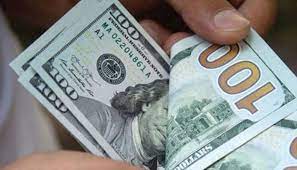Publisher: Maaal International Media Company
License: 465734
Dollar rises, yuan slumps as China’s COVID unrest spooks markets
اقرأ المزيد
The dollar climbed on Monday as protests in China against the government’s anti-COVID policies made investors turn away from riskier assets, and consigned the Chinese yuan to a more than two-week low against the safe-haven greenback, Reuters reported.
Investors were worried over how the government in Beijing would react to the the wave of civil disobedience when COVID cases are rising.
The offshore yuan CNH=D3 fell to an over two-week low in Asian trading, and was last roughly 0.4% lower at 7.2242 per dollar.
The Australian dollar AUD=D3, often used as a liquid proxy for the yuan, slid more than 1% to $0.6681. The kiwi NZD=D3 fell 0.72% to $0.6202.
China’s stringent COVID restrictions have taken a heavy toll on its economy, and authorities have implemented various measures to revive growth. On Friday, the People’s Bank of China (PBOC), the nation’s central bank, said it would cut the reserve requirement ratio (RRR) for banks by 25 basis points (bps), effective from Dec. 5.
Elsewhere in the currency market, the euro EUR=EBS fell 0.5% to $1.0350, while sterling GBP=D3 was down 0.26% at $1.2057.
The latest developments in China have put a pause on the U.S. dollar’s decline, which had been softening over the past few weeks on hopes that the Federal Reserve would soon slow its pace of rate hikes – a view that was supported by the November meeting minutes released last week.
Against a basket of currencies, the U.S. dollar index =USDrose 0.07% to 106.41, edging away from its recent three-month low of 105.30.
Fed Chair Jerome Powell is due to speak on the outlook for the U.S. economy and the labour market at a Brookings Institution event on Wednesday, which couldy provide more clues on the outlook for U.S. monetary policy.
Market expectations of a less hawkish Fed have helped the Japanese yen gain a footing, said Moh Siong Sim, a currency strategist at Bank of Singapore.
The yen JPY=EBS was up about 0.5% to 138.40 per dollar.









